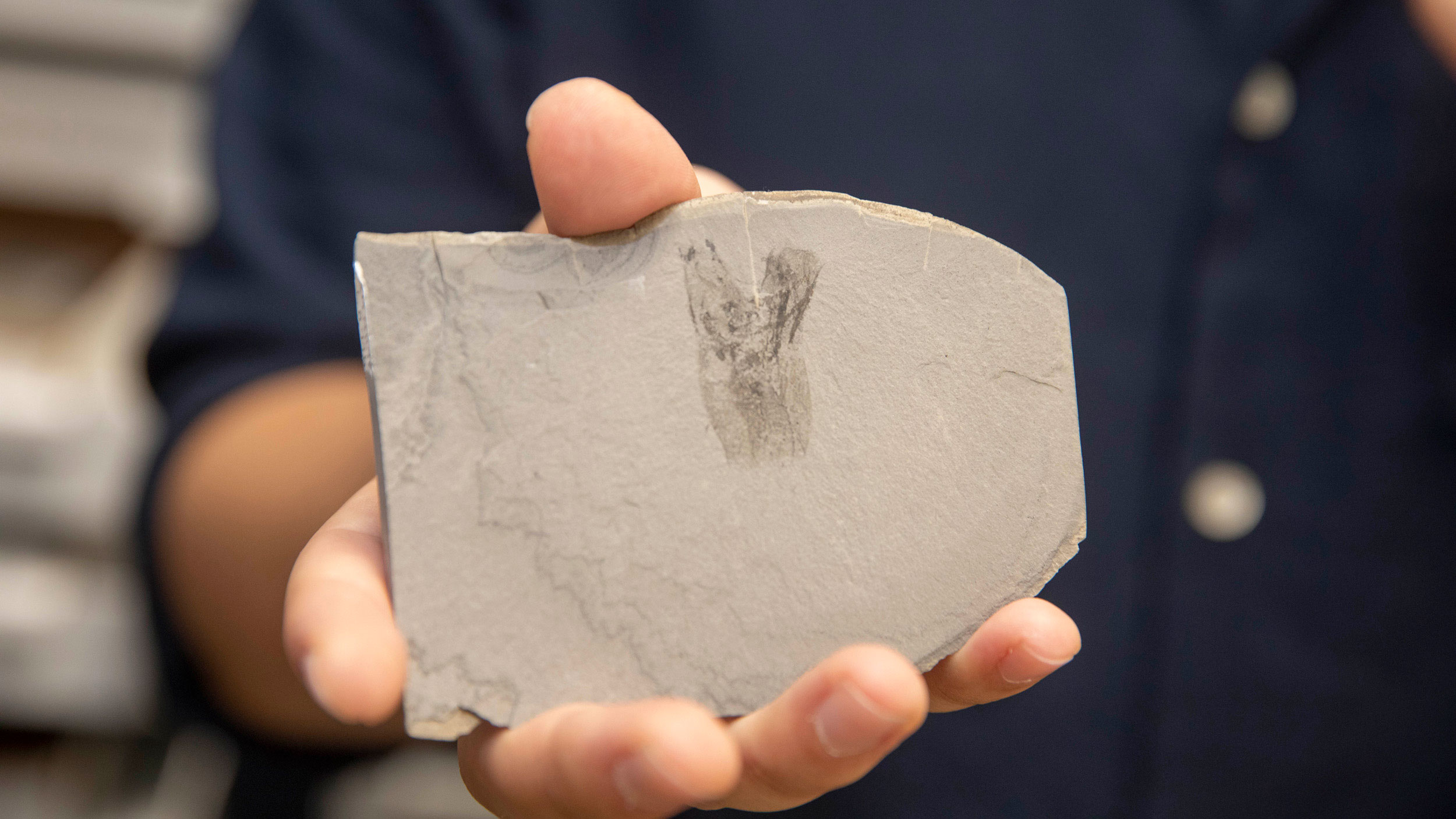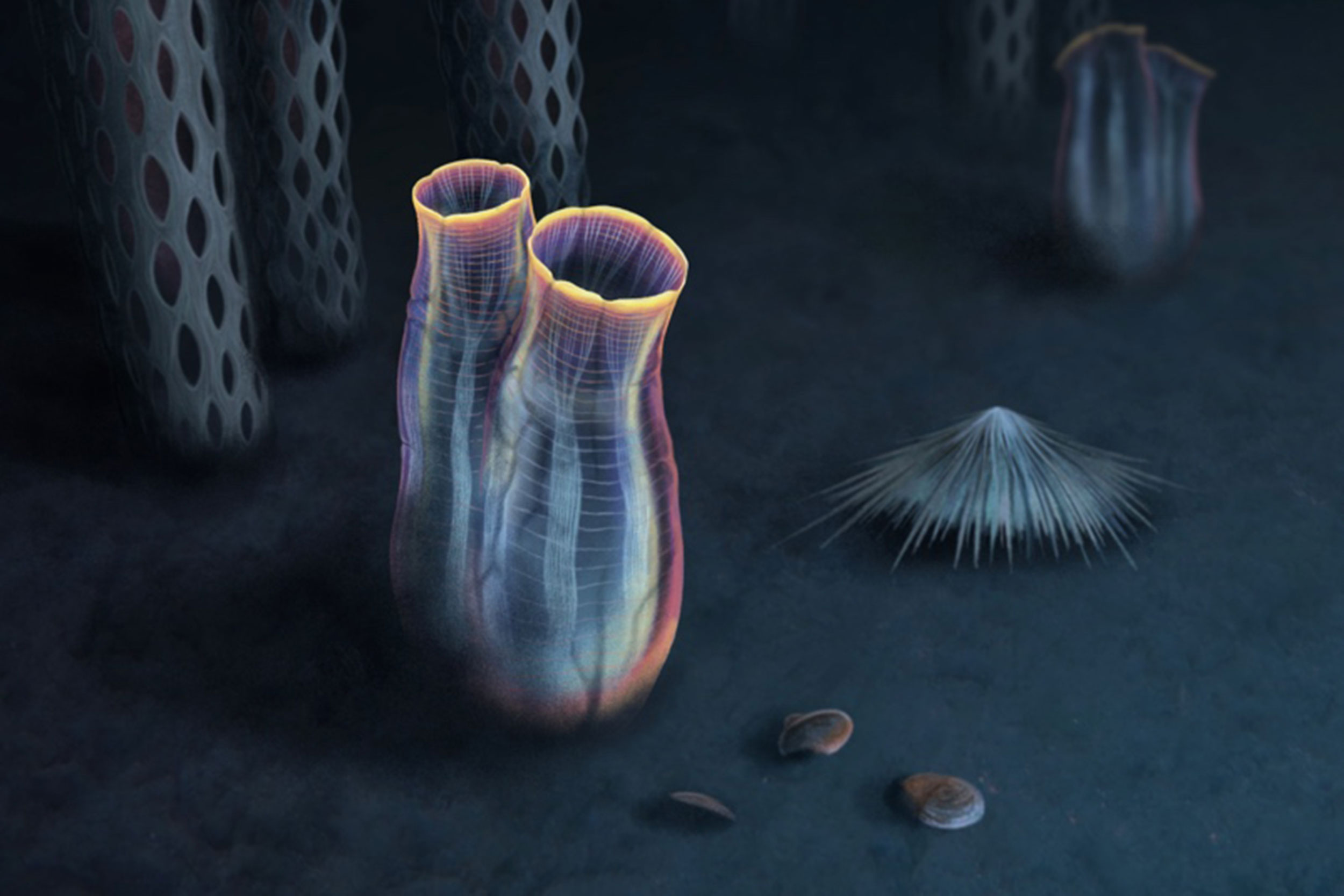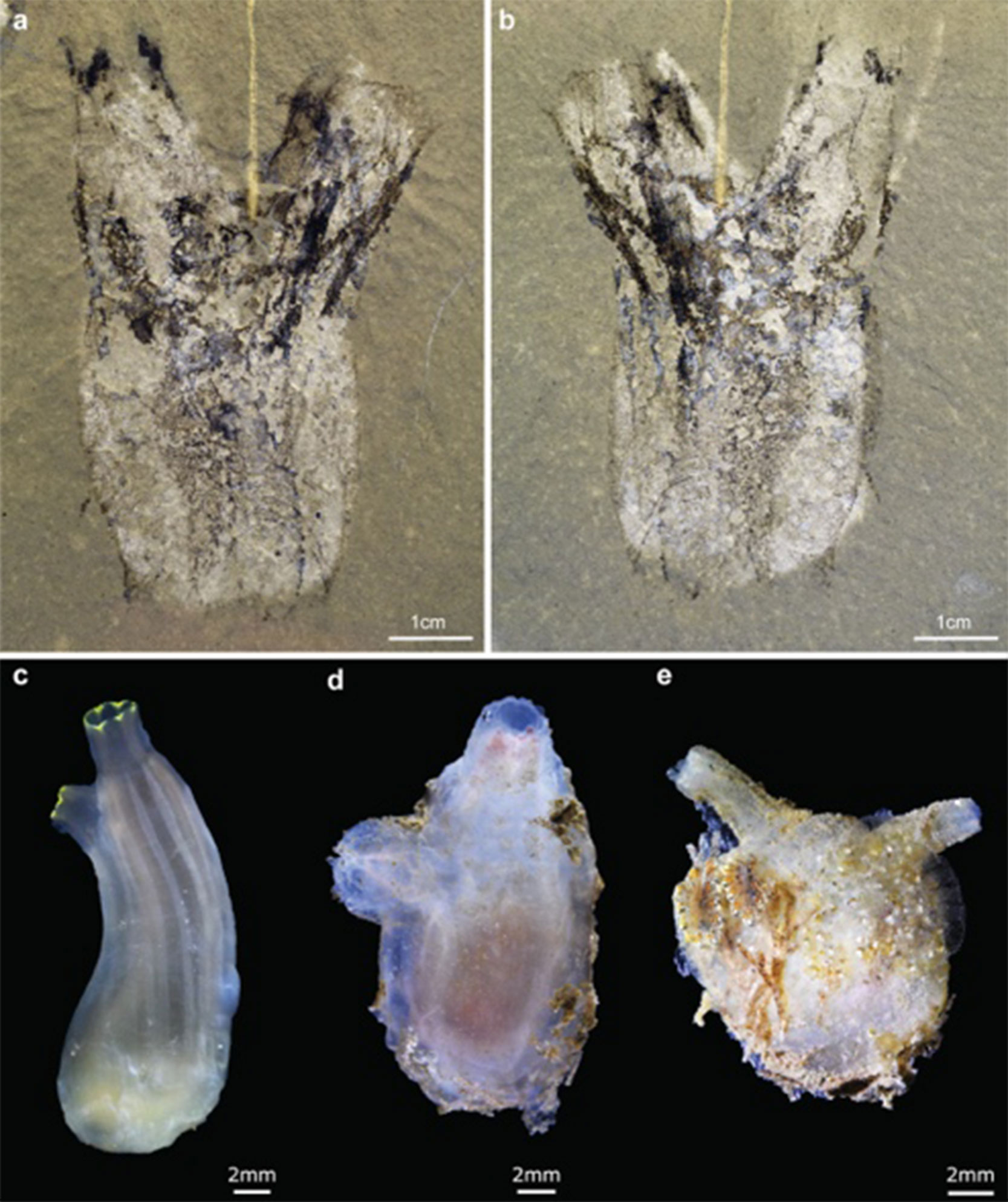500-million-year-old fossil reveals new secrets

Kris Snibbe/Harvard Staff Photographer
Discovery of rare tunicate fossil offers surprising insights on marine animals’ evolution
Karma Nanglu says his favorite animal is whichever one he’s working on. But his latest subject may hold first-place status for a while: a 500-million-year-old fossil from the tunicates, a wonderfully weird group of marine invertebrates.
“This animal is as exciting a discovery as some of the stuff I found when hanging off a cliffside of a mountain. … It’s just as cool,” said Nanglu, a postdoctoral researcher in the Department of Organismic and Evolutionary Biology.
In a new study in Nature Communications, Nanglu and co-authors describe the new fossil, named Megasiphon thylakos, revealing that ancestral tunicates lived as stationary, filter-feeding adults and likely underwent metamorphosis from a tadpole-like larva.
Tunicates are truly strange creatures that come in all shapes and sizes and have a wide variety of lifestyles. An adult tunicate’s basic shape is typically barrel-like, with two siphons projecting from its body. One of the siphons draws in water with food particles through suction, allowing the animal to feed using an internal basket-like filter device. The other siphon expels the water.
There are two main tunicate lineages, ascidiaceans (often called “sea squirts”) and appendicularians. Most ascidiaceans begin their lives looking like a tadpole and morph into the barrel-shaped adults. They live their adult lives attached to the seafloor. In contrast, appendicularians retain the look of a tadpole as they grow to adulthood and swim freely in the upper waters.
Artistic reconstruction of Megasiphon thylakos.
Illustration credit: Franz Anthony

“This idea that they begin as tadpole-looking larva that, when ready to develop, basically headbutts a rock, sticks to it, and begins to metamorphose by reabsorbing its own tail to transform into this being with two siphons is just awe-inspiring,” said Nanglu.
Interestingly, tunicates are the closest relatives of vertebrates, which include fish, mammals, and even humans. How this odd-looking creature could be related to vertebrates would be hard to imagine were it not for that tadpole beginning. Tunicates’ close relationship to vertebrates makes studying them critical for understanding our own evolutionary origins. Unfortunately, it’s not easy to do, as tunicates are almost completely absent from the entire fossil record, with only a handful appearing convincingly as members of the group.
With so few fossils, scientists relied mainly on what could be learned from modern tunicate species. Because no one knew the morphology or ecology of the last common ancestor of the tunicates, scientists could only hypothesize that it was either a two-siphoned, benthic animal living at the sea floor, like the ascidiaceans, or a free-swimming animal like the appendicularians.
M. thylakos had all the hallmarks of an ascidiacean tunicate, the barrel-shaped body and prominent siphon-like growths. But the feature that stood out to the team was the dark bands running up and down the fossil’s body.
High-powered images taken of M. thylakos allowed the researchers to conduct a side-by-side comparison to a modern ascidiacean. The researchers used dissected sections of the modern tunicate Ciona to identify the nature of Megasiphon’s dark bands. The comparisons revealed remarkable similarities between Ciona’s muscles, which allow the tunicate to open and close its siphons, and the dark bands observed in the 500-million-year-old fossil.

“Megasiphon’s morphology suggests to us that the ancestral lifestyle of tunicates involved a non-moving adult that filter-fed with its large siphons,“ said Nanglu. “It’s so rare to find not just a tunicate fossil, but one that provides a unique and unparalleled view into the early evolutionary origins of this enigmatic group.”
M. thylakos is the only definitive tunicate fossil with soft tissue preservation that has been discovered to date. It is the oldest of its kind originating from the middle Cambrian Marjum Formation in Utah. The fossil was recognized as a tunicate by co-authors the Department of Organismic and Evolutionary Biology’s Rudy Lerosey-Aubril a research associate, and Assistant Professor Javier Ortega-Hernández while they were visiting the Utah Museum of Natural History in 2019.
“The fossil immediately caught our attention,” said Ortega-Hernández. “Although we mostly work on Cambrian arthropods, such as trilobites and their soft-bodied relatives, the close morphological similarity of Megasiphon with modern tunicates was simply too striking to overlook, and we immediately knew that the fossil would have an interesting story to tell.”

Tunicate’s close relationship to vertebrates makes studying them critical for understanding our own evolutionary origins, say co-authors of the study, Rudy Lerosey-Aubril (from left), Karma Nanglu, and Javier Ortega-Hernández.
Kris Snibbe/Harvard Staff Photographer
Fossils from the Marjum Formation date from shortly after the Cambrian Explosion approximately 538 million years ago, one of the most significant evolutionary events in Earth’s history. The most major animal groups appear in the fossil record of this period for the first time, evidence of radically changed marine ecosystems. Tunicates, however, are noticeably absent in Cambrian rocks, even though they are diverse and abundant in modern oceans.
There are many Cambrian fossil sites with exceptional preservation in the U.S., but these are often overlooked compared to those from the Burgess Shale in Canada and Chengjiang in China. “The discovery of Megasiphon perfectly illustrates why Javier and I have been conducting fieldwork in Utah for the last 10 years,” said Lerosey-Aubril. “The Marjum strata has all of our attention right now, as we know that it preserves fossils of animal groups, such as tunicates or comb jellies, that are almost entirely absent from the Cambrian fossil record.”
Molecular clock estimates suggest that ascidiaceans originated 450 million years ago. However, at 500 million years old, M. thylakos provides the clearest view into the anatomy of ancient tunicates and their earliest evolutionary history. Significantly, M. thylakos provides evidence that most of the modern body plan of tunicates was already established soon after the Cambrian Explosion.
“Given the exceptional quality of preservation and the age of the fossil, we can actually say quite a bit about the evolutionary history of the tunicates,” said Nanglu. “This is an incredible find, as we had virtually no conclusive evidence for the ancestral modes of life for this group before this.”





